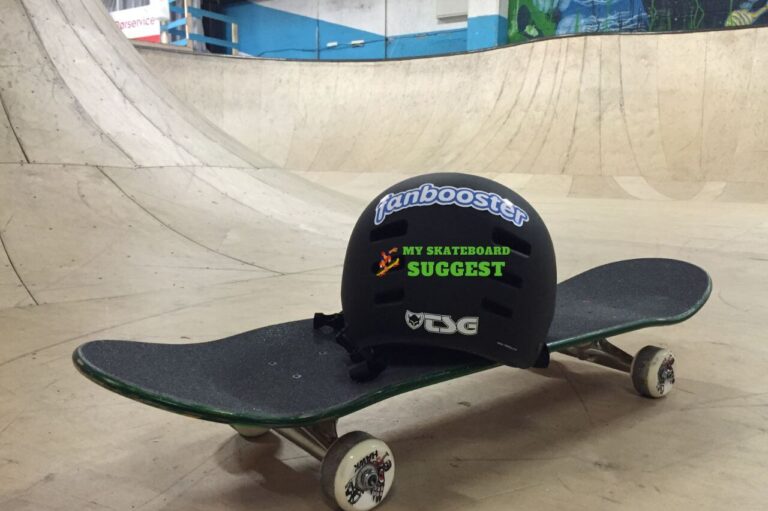Welcome to the ultimate guide on “How to Make a Skateboard Deck.”
Crafting your skateboard deck is an exciting and hands-on project that allows you to customize your ride to your specifications.
Whether you’re an avid skateboarder seeking a unique deck or a DIY enthusiast looking for a creative challenge, this comprehensive guide will walk you through the step-by-step process of creating a personalized skateboard deck.
From selecting suitable materials to shaping and finishing your deck, we’ll provide you with the knowledge and insights to bring your skateboard deck dreams to life.
So, let’s dive in and start your journey to crafting a one-of-a-kind skateboard deck that you’ll be proud to ride.

Making a skateboard deck can be a fun and rewarding DIY project.
Here are the general steps to create your skateboard deck:
Materials and Tools:
Wood:
The most common material for skateboard decks is maple plywood.
You’ll need a few layers of high-quality, 7-ply maple veneers.
The standard size for a skateboard deck is around 32 inches long and 8 inches wide, but you can adjust the dimensions to your preference.
Mold or Press:
You’ll need a skateboard mold or press to shape the deck.
You can purchase a mold or create one yourself.
Glue:
Use robust and waterproof wood glue that can withstand the stresses and impacts of skateboarding.
Clamps:
You’ll need sufficient clamps to press the layers of wood together.
Jigsaw or Bandsaw:
This is used for cutting the skateboard deck into its desired shape.
Router:
A router can round the edges and create a smooth, finished look.
Sandpaper:
You’ll need various grits of sandpaper to sand the deck to a smooth finish.
Steps:
Design Your Deck:
Start by designing the shape and graphics for your skateboard deck.
You can create your artwork or use pre-made graphics.
Cut the Veneers:
Cut the maple veneers into the desired shape and size.
Remember to leave some extra material around the edges for trimming later.
Apply Glue:
Apply a layer of glue to one side of each veneer.
Make sure it’s an even and thin coat.
Stack the Veneers:
Stack the veneers on each other, with the glue side facing inwards.
You should have around seven layers of veneer.
Use the skateboard mold or press to shape the deck to your desired concave and kicktail shape.
Clamp and Press:
Use clamps to hold the veneers together and place them in the mold or press.
Apply even pressure and leave them to dry for at least 24 hours.
Trim and Sand:
After the glue has dried, remove the deck from the mold or press.
Use a jigsaw or bandsaw to cut the deck into its final shape.
Then, use a router to round the edges for a smooth finish.
Graphics:
Apply your graphics or designs to the deck.
You can use paint, stickers, or other artistic methods.
Seal and Finish:
Seal the deck with a clear skateboard deck finish or sealant to protect it from moisture and wear. This will also enhance the appearance of your graphics.
Grip Tape:
Apply grip tape to the top of the deck for traction.
Assemble the Complete Skateboard:
Mount your trucks, wheels, and bearings to complete your skateboard.
Remember that making your skateboard deck requires skill and precision, so take your time and ensure safety throughout the process.
It’s a creative project that can result in a unique and personalized skateboard.
FAQs
What is the best wood for a skateboard?
The best wood for a skateboard is Canadian Maple.
It is the preferred choice for skateboard decks due to its strength, durability, and flexibility.
Canadian Maple, typically used in a 7-ply configuration, provides the ideal combination of properties to withstand the rigors of skateboarding.
This high-quality wood ensures your skateboard deck can handle the impacts and stresses of tricks and maneuvers while maintaining a responsive and consistent ride.
How many layers of wood should a skateboard have?
A standard skateboard deck typically consists of 7 layers of wood, known as 7-ply construction.
This layering provides the right balance of strength and flexibility.
How are skateboards pressed?
Skateboards are pressed using a method called cold pressing, which is a common technique in skateboard manufacturing.
Cold pressing involves utilizing hydraulic pressure and lower temperatures to compress multiple layers of wood veneer.
This process results in a skateboard deck that is strong and durable and precisely shaped with the desired concave and kicktail.
Cold pressing ensures that the wood layers bond effectively, providing the deck with the necessary flexibility and resilience for skateboarding.
How much pressure is needed to press a skateboard?
The pressure needed to press a skateboard varies, but it’s essential to apply even and substantial pressure during the pressing process.
This often requires hydraulic or specialized skateboard presses to ensure proper shaping and bonding of the wood veneers.
The ram pressure typically ranges around 175 PSI, depending on the specific press.
To calculate this, one can consider the hydraulic ram pressure, which often amounts to 25 tons or 50,000 pounds.
When applied to the deck’s surface area (for instance, a standard deck measuring 12 X 36 inches, resulting in a surface area of 432 square inches), it yields a usable PSI of approximately 115.
This consistent pressure is crucial for ensuring the wood veneers bond effectively during the pressing process, creating a robust and responsive skateboard deck.
In conclusion
making your skateboard deck is a rewarding creative endeavor and a fantastic way to fine-tune your ride to your preferences.
Throughout this guide, we’ve covered the essential steps, from selecting the best wood and pressing your deck to applying unique graphics and finishing touches.
Whether you want to express your artistic flair, customize your skateboard for optimal performance, or enjoy crafting something with your hands, this guide has equipped you with the knowledge and skills to embark on this exciting journey.
As you hit the streets or skateparks with your handmade deck, you’ll have a newfound appreciation for the craftsmanship behind your ride and a skateboard that’s your own.
So, grab your tools and get ready to shred on a skateboard deck you’ve created from start to finish.


